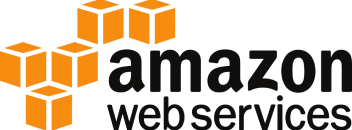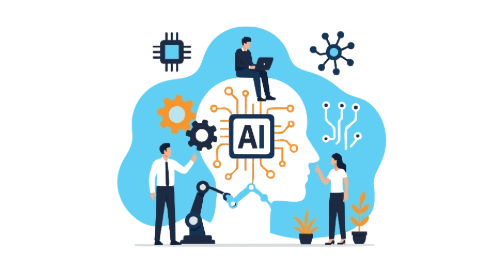Imagine this scenario. It’s a typical Monday morning at an enterprise company. The IT support team, already inundated with a deluge of system alerts, is sifting through dozens of error notifications, a task as tedious as finding a needle in a haystack. In this cacophony of alerts, a crucial notification indicating a brewing issue in an integral integration solution goes unnoticed. By the time it’s spotted, it’s too late. The minor glitch has ballooned into a major system outage, disrupting operations and costing the company valuable time and resources.
In the ever-evolving landscape of IT, such scenarios are all too common. Yet, they’re entirely avoidable. The solution lies in recognising one simple truth – the need for ongoing maintenance and support for integration solutions is a critical component of effective IT management.
This blog will delve into the intricacies of this important aspect, illustrating how proactive system maintenance can reduce the noise of unnecessary error notifications, provide an efficient method for catching and resolving errors, and shed light on how to implement improvements that take the system to its next level of efficacy. We’ll explore how to empower your support teams, streamline your operations, and safeguard your systems, all with the aim of ensuring business continuity and driving growth.
In an environment where every moment of system downtime can have significant consequences, ongoing maintenance and support for integration solutions are not just operational needs – they’re strategic imperatives.

The Imperative of Maintenance and Support
The heart of an efficient enterprise beats to the rhythm of its integration solutions. Systems must seamlessly connect to allow the free flow of data, ensuring operational efficiency and driving growth. Yet, these systems don’t maintain themselves. They need continuous monitoring, updates, and support to ensure they are functioning optimally and evolving with the needs of the organisation. This is where the true importance of ongoing maintenance and support emerges.
Reducing the Noise: The Impact on Support/Operations Teams
One of the most crucial benefits of diligent maintenance and support lies in its capacity to reduce the noise created by superfluous error notifications. Without consistent upkeep, systems can inundate support and operations teams with a deluge of alerts and warnings, many of which might be insignificant or repetitive.
This ‘noise’ poses two significant challenges. Firstly, it can act as a distraction, shifting the team’s attention away from high-priority issues to these insignificant alerts. This redirection of focus can lead to the misallocation of resources, pulling team members away from tasks that need their expertise the most.
Secondly, a constant stream of notifications can lead to alert fatigue among team members. This occurs when so many alerts are generated that the team becomes desensitised, potentially overlooking crucial warnings amidst the flood of redundant notifications. Alert fatigue not only impacts the efficiency of the operations team but can also lead to lower morale and increased stress levels among the team members.
Through regular monitoring and proactive maintenance, your system can be fine-tuned to flag only significant issues, effectively reducing the noise. This approach enables your support/operations team to focus on what truly matters: ensuring the smooth running of integration solutions and the swift resolution of genuine issues. By reducing unnecessary distractions and the risk of alert fatigue, ongoing maintenance enhances the productivity and well-being of your teams, fostering a more effective and healthier work environment.
Catching and Resolving Errors: The Role of Logging
An efficient integration solution functions much like a well-oiled machine. But even the best machines can encounter disruptions that can significantly impede operations. Catching these errors in time is critical to ensure the operational efficiency of the organisation. This is where effective logging from the outset comes into play. Adding comprehensive logging mechanisms to your integration application from the beginning serves as a proactive measure to identify and understand errors. It’s like installing a CCTV system in a building – it monitors all activities and helps identify when, where, and why an issue has occurred. The same goes for logging in your integration application. It provides visibility into the application’s activities, helping identify issues promptly and providing essential insights into their cause.
In the context of catching and resolving errors, this approach allows support staff not just to see that an error has occurred but to understand the sequence of events leading to the error. It provides them with a clear picture of the ‘what’, ‘how’, and ‘why’ of the error. This understanding is vital for resolving the current issue effectively and helps pre-empt potential future problems.
Without adequate logging, support staff might find themselves in a maze of confusion, trying to decipher the source of the error with limited clues. However, with well-implemented logging, they have a map that leads them directly to the problem source. This not only reduces the time taken to resolve the issue but also lessens the impact of the error on the overall system performance.
Implementing Fixes and Improvements: The Value of Strategic Planning
The role of ongoing maintenance and support does not end with the identification and fixing of errors. A proactive and strategic approach goes further by implementing fixes, improving the system, and planning for the future. Fixes and maintenance should not be considered as isolated, reactive tasks triggered by an issue’s emergence. Instead, they should be integrated into your regular planning processes. This approach shifts the paradigm from firefighting to fire prevention, reducing the chances of recurring errors and system breakdowns.
A vital part of this strategy involves creating a backlog for fixes and improvements. Some solutions may take time to fix due to resource constraints, the complexity of the issue, or other ongoing projects. However, rather than letting these issues fall by the wayside, they should be documented in a backlog. This repository of tasks enables you to track, manage, and plan for these issues over time. The backlog is not merely a list of tasks. It’s a strategic tool that allows the business to assess each item’s priority and allocate resources accordingly. By evaluating factors such as the issue’s impact on system performance, its relevance to business operations, and the resources required for resolution, you can make informed decisions on what to tackle, when, and how.
Finally, remember that fixes and improvements are not just about troubleshooting but about growth. They provide valuable insights that can inform the evolution of your system. The process of tracking errors, implementing fixes, and making improvements contribute to the resilience of your systems, ensuring they don’t just keep running but keep improving.
In the current IT ecosystem, ongoing maintenance and support for integration solutions are no longer optional – they’re a business imperative. Reducing unnecessary noise, swiftly addressing errors, and implementing proactive improvements are critical to ensure business continuity and growth. As we continue to lean into the future of IT, these strategies will define the success of our systems and, ultimately, our organisations.
In this ever-evolving IT landscape, preparation is key. Investing in effective maintenance and support for your integration solutions today sets the stage for operational excellence and sustained growth tomorrow.







































